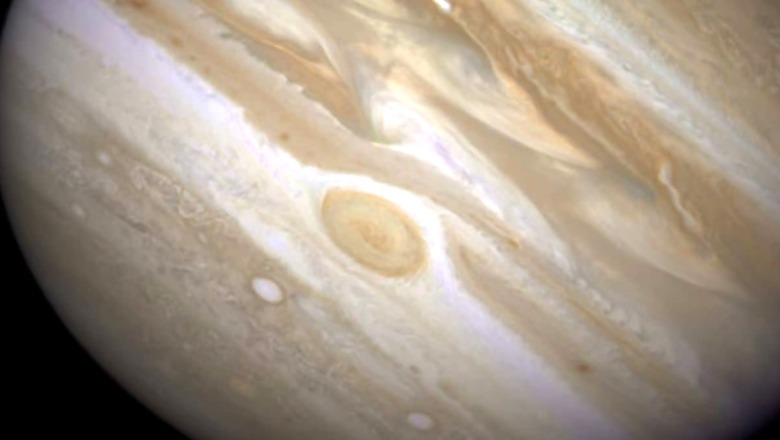
views
Jupiter’s Great Red Spot (GRS) is not as stable as it might look and behaves like a bowl of JELL-O, the National Aeronautics Space Agency (NASA) has revealed. Using the Hubble Space Telescope, the space station observed the GRS between December 2023 and March 2024, creating a time-lapse movie that shows the storm’s fluctuating size and shape. These observations were detailed in a paper published on October 9 in The Planetary Science Journal.
GRS is among the most studied and explored features of our solar system. This recurrent anticyclonic storm, which has been lasting for at least one and a half centuries, is not only as large as the Earth but also features behaviours that have attracted much interest from astronomers.
During December 2023 and March 2024, Hubble was fully dedicated to the GRS conducting an observational survey solely for this purpose. This endeavour enabled the scientists to gather a time-lapse movie that documents the wobbly movement of the storm. The results were surprising: although the GRS was often observed to be shifting longitudinally, scientists have now observed a dramatic change in size.
The evidence presented also reveals that the GRS contracts and expands as a stress ball does when it is squeezed. This behaviour also suggests that a storm is not a static entity, but has the ability to evolve and change its shape based on the interaction with the nearby jet streams.
According to Amy Simon, a lead researcher at NASA’s Goddard Space Flight Centre, “With Hubble’s high resolution, we can say that the GRS is definitively squeezing in and out simultaneously as it moves faster and slower. That was very unexpected, and there are currently no hydrodynamic explanations”.
Analysis of ultraviolet light identified that the inner part of the storm becomes most luminous when its inflation is at the peak in the oscillation cycle. This brightness suggested that the absorption of haze at the higher altitude was not as much at that time.
“As it accelerates and decelerates, the GRS is pushing against the windy jet streams to the north and south of it,” study co-author and University of California at Berkeley planetary scientist Mike Wong said in a statement. The idea is essentially like a sandwich and when there is an excess of the filling, the slices of bread protrude in the middle, concluded Wong.
















Comments
0 comment